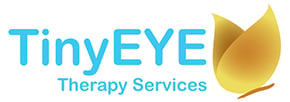Hi Everyone,
When children experience their world with all of their senses, their world becomes part of them – part of what they know for sure –part of what they want to learn and discover. Parents who home school their children have the daily task of cultivating their children’s minds and engaging them in experiences that will promote successful learning. It has been my privilege to partner with home school parents to support speech and language development. Below, I have included a quick top ten list of how to create a communication-enriched learning environment within a home school.
1. Learn Milestones:
Children generally develop play, literacy, speech, and language skills along a hierarchy and within a certain age range. Understanding what is considered “normal” for a certain age can help you know when to access professional support, how to adjust your teaching to help a skill emerge, and also when to simply relax with the knowledge that the skill is not ready to emerge at this particular age.
2. Back to Basics:
Children are at their best when their primary needs are met. For instance, feeling safe and warm with a full tummy sets them up for success. Likewise, a visit to the doctor or health clinic can give you peace of mind that they are developing as expected and that their health status promotes learning. It is very important to confirm that their ear drums appear normal for hearing. Consistent ear infections can cause your child to hear less effectively, which makes learning difficult. Ask your doctor if a referral to an audiologist or other professional is recommended.
3. Routine, Repetition, Relevance:
Routine: Attempt to have a daily and weekly routine. This helps children know what to expect, become happy and skilled participants, and learn valuable organizational skills. Likewise, notice how you have routine ways of transitioning in and out of activities, taking turns, and participating in the learning. The words and methods you routinely use will ultimately become your child’s words and methods. It may be helpful to use sequencing words, such as first…, then.., last… when explaining the steps to the activities.
Repetition: Repeat key points and key experiences. Put yourself in the position of learning a new language. You would need to hear and try a new word several times before it became your own. The same is true for learning new skills.
Relevance: Kids tend to advance their understanding and application of new skills when the knowledge applies to their life in some way. For instance, the whole point of learning fractions is so that we can make cookies later! The whole point in learning these vocabulary words is so we can follow the steps to building a gingerbread house! The whole point to practicing measurement and lines is so we can build our skateboard ramp! The whole point to learning about clouds is so we can predict the weather before our camping trip! Help your child apply emerging skills throughout the day – soon he or she will feel like the expert!
4. Pretell; Tell; Retell:
Before you start an activity, talk about what you WILL DO (you can demonstrate, too). Then, as you DO the activity, tell what you ARE DOING. Last, retell what you DID. This is an amazing way to develop grammar, sentence formulation, sequencing, and subject knowledge. Example - You are going to be testing if an egg floats in boiling water. Consider this script: PRETELL: First, we will fill the pot with water. Next, we will turn on the heat and wait for it to boil. Next, we will put the egg into the water. Last, we will see if it floats. TELL: First, we are filling the pot with water. Next, we are turning on the heat and waiting for it to boil. Next, we are putting the egg into the water. Last, we are seeing if it floats. RETELL: First, we filled the pot with water. Next, we turned on the heat and waited for it to boil. Next, we put the egg into the water. Last, we saw it float/sink.
5. Overlap Skills:
Congratulate yourself when you notice how skills in literacy, numbers, and language overlap during your lessons.
6. Themes:
Picking a theme of the day or week can strongly support your child’s vocabulary development. Consider bringing home a big bag of apples, for instance. Also consider the subjects you address by manipulating those apples! Encourage your child to physically experience the activities. Following is a quick brainstorm for applying the Apple Theme to various subjects: MATH: Concepts such as more/less, numbers, all/none, fractions, addition…
SPELLING: Ideas for word lists - fruits, qualities of apples, items that contain apples, types of apples, words related to growing apples (this also promotes word retrieval skills)
LANGUAGE ARTS: Reading/writing/drawing/singing an apple story or song. Read or invent recipes. Apply apples to your grammar unit (plurals, sentence development). Likewise, create concept maps. For instance, put the word APPLE in the middle. Around the word APPLE, write all the qualities of how an apple looks, feels, tastes, smells, etc. Another idea is to write as many types of fruits that you can around the apple. Exploring attributes and members of a category is helpful for language development.
DRAMATIC PLAY: Write and produce a play - FROM SEED TO APPLE PIE! What would happen if you wrote it from the perspective of an earth worm?
PHYSICAL ACTIVITIES: Apply Toss, Apple Football, Apple Relay, Apple Roll Race
SCIENCE: Use your apples to learn about life cycles, states of matter, and environmental themes. Explore sinking vs floating, how fast objects fall, and what happens if you add vinegar to apple juice!
LITERACY DEVELOPMENT:
a. Phoneme Awareness – Go on a treasure hunt to find everything you can that starts with the same sound as APPLE. Next, bring in a banana. Now you have TEAM APPLE and TEAM BANANA. For this hunt, you have to organize your treasures based on if they start with the sound “A” or “B”.
b. Rhyming: Show your child how you can take away the first sound and bring in a new sound to make a new word. i.e.) RED APPLE - take off the “R” and add a “B”…BED APPLE!!! Red-Bed rhyme! You will have lots of laughs. Likewise, read predictable rhyming books that have good pictures to support the text. Read it together. You stop on the last word of a sentence to encourage your child to finish (i.e. Brown Bear Brown Bear what do you see? I see a yellow duck looking at _____”).
c. Syllables: Use your new target words to learn about counting syllables (jump or clap for each syllable); listen to syllables to decide what word you are saying (ba-na-na = banana!); and break words up into syllables (banana = ba na na).
d. Visual Supports: Take pictures of your routines, steps of activities, or learning centers. Write the related word under the picture. Attach Velcro to each picture. Attach these pictures where applicable around the room. Likewise, line up these pictures in a row to create a visual schedule. Your child can “read” the steps of a task or the activities that are planned for the day.
e. Make a Memory: Encourage your child to write (or draw) a brief story about his or her favourite part of the day. Take pictures when you can. Over the year, you will develop a nice memory book, have a record of how your child has progressed over the year, and develop your child’s writing skills.
f. Learning is Learning: Appreciate the value of enabling your child to access literacy practice in less “academic” materials. For instance, reading lyrics to favourite songs, reading the directions for building a lego tower, writing grocery lists for a yummy meal, and drawing rules for sharing special toys are all literacy enhancing activities.
7. Model:
If your child struggles with speech clarity or language expression, model what he or she would say if he or she could. Listen to your child’s message, rather than how it is said.
CHILD: I wike cool
YOU: You LIKE school! I am glad you LIKE school!
CHILD: Him goed already
YOU: He went already. You are right – he went already. It is your turn!
8. Access your World:
As much as possible, visit community centers to experience the routine of going to a post office, library, or store. Plan a trip to a museum or special activity. Turn your own yard into a camping adventure. Turn your pantry into a store! Access books, videos, YouTube, or other internet sites to help your child experience the world beyond his or her front door. For instance, if you are learning about the Gold Rush days, watch a YouTube video. It is especially exciting to SEE the places you have read about.
This is a sample video:
[youtube=http://www.youtube.com/watch?v=YFflJCrZtGE]
9. Concepts and Following Directions:
“Before you color the first page with the green marker, circle the smallest coins…but not the pennies. After you glue on the three cotton balls around the edge, cut out your clouds.” Wow! So many words to know! Consider the following:
a. Give directions in the order you want them done. First do this. Then do that.
b. Pre-teach new concepts. What do you mean by AROUND? Demonstrate.
c. Give one step at a time if there is a lot to remember. Repeat.
d. Use a visual schedule when you can (pictures or samples of each step). This helps your child “read” what to do next and increases independence.
e. Play ‘opposites’ games to learn important concepts that DESCRIBE. i.e. hot/cold, empty full, all/none, up/down, in/out, top/bottom, fast/slow…
f. Intentionally learn concepts that name the following ideas: shapes, colours, sizes (big bigger biggest), placement (on, between, under, middle, top), amount (all, none, more, some, less), position (first, second, third, last, before, after), emotions, senses (soft, bumpy, hot, squishy).
10. Access a TinyEYE Speech-Language Pathologist :
TinyEYE’s online Speech-Language Pathologists are experienced with consulting with parents so that they can feel informed and empowered to help their children experience success. We welcome you to contact TinyEYE with your questions or concerns. We are happy to continue the conversation with you.

![]()
Marnee Brick, MSc
Speech-Language Pathologist and Director of Speech Therapy
TinyEYE Therapy Services (Speech Therapy Telepractice)
Growing smiles, mending spirits, engaging children in their lives




